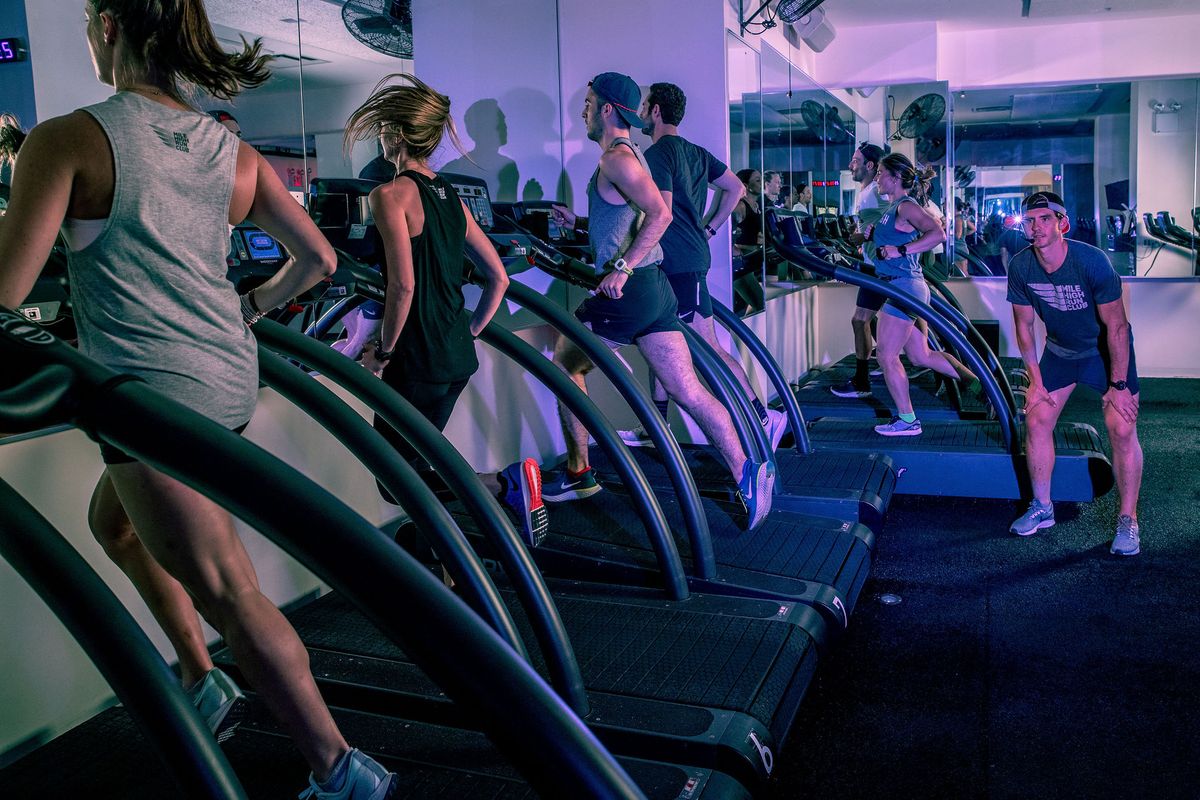Fart-wha?
Ever heard our coaches use the term Fartlek and have no idea what it means? Or inwardly groaned when a Coach tells you that the workout for today's class is going to be repeats? In this week’s blog, Coaches Matt, Tim and Yusuf breakdown the different running terminology you might hear, explain how and why the specific workouts we do in class help improve your running and even provide workouts for you to try on your own!
FARTLEK: Coach Matt (@matthewlukemeyer)
Fartleks! No only fun to say, but a fun way to get some fitness. A Swedish word for speed play, it really focuses on keeping PLAY part of the workout by going back and forth between harder efforts and easy jogging recovery. It can be structured (ex: 3:00 hard effort / 3:00 easy effort) or unstructured (ex: run hard in between every other stoplight). So if you feel like you've been tied down recently by intervals on the track, this is a great choice.
Fartleks are a key part of any runners training cycle. Not only are you teaching your legs to work through different gears with speed, but you're gaining the endurance and aerobic benefit from a longer run. Especially for marathoners, you're improving your ability to recover without having to stop your run.
I personally love throwing in Fartleks when you don't have tools like a track or if you're running out on trails. And it's a great way to break up a run into some fun little bites!
One of my favorite Fartlek workouts is a descending time ladder:
10:00 warmup
3:00 hard
3:00 easy
2:00 hard
2:00 easy
1:00 hard
1:00 easy
And repeat this as many times as you want!
INTERVALS & REPEATS : Coach Yusuf (@ycoolj)
I’ll stick to the most common terms. By definition, “Interval” running workouts involve running set distances at specific speeds with defined rest intervals. They are designed to improve aerobic power and endurance. “Repeat” running workouts also involve running set distances at specific speeds with defined rest intervals. But they are designed to improve glycolytic capacity and power.
The major difference between the two is that repeat workouts allow for complete recovery between repetitions while interval workouts do not.
Now that you’ve defined the “what” of repeats and intervals, a basic understanding of the “why” goes a long way. It’s long been discovered that repeating shorter, higher intensity bouts of work improves the function of the cardiopulmonary system (heart + lungs) more efficiently than longer, sustained efforts of lower intensity. This, in a nutshell, explains why repeats and intervals work. By training at speeds faster than race pace, but at shorter distances, you will improve your speed and work capacity over time. This will also benefit long distance running, by making longer efforts easier and faster.
Another benefit of using Repeat and Interval workouts when training for longer distances are that they are more sustainable training tools over time versus constant slower workouts which often lead to overuse injuries.
As you might imagine, variables it time, pace, and duration can be adjusted in many different combinations to create an almost infinite number of workouts. Understanding how each of these variables can be adjusted to help you achieve your own specific goals is crucial to training efficiently.
Sample 5K training Interval Workout:
8 - 12 x 400m at 1:30 each (1 mile pace), 2 min jog recovery
Sample 5K training Repeat Workout:
6-8 x 800m at 3:00 each (1 mile pace), 5 min walk recovery.
HILLS Long v Short: Coach Tim (@tedowney90)
With all of the training options out there one of the most beneficial options are hills - of all types. Hills require you to focus on proper running form, work through eccentric and concentric movement patterns, and build strength you can’t get on an open road. Running hills will require the body to engage in high knee drive, hinging forward, leaning into the stride, and driving through the forefoot to push off for the next stride— all the things that are crucial to proper and efficient running form.
The long, slow hill climbs will increase neuromuscular development and recruitment, increase aerobic metabolism and running economy, and improve mental stamina for those wide open roads and climbs during your next long run or race. These type of hill workouts are great for mid to distance runners due to the extended duration and greater emphasis placed on aerobic conditioning.
The short, fast hills play another important role in training. Increased neuromuscular recruitment, with a focus on increased anaerobic metabolism. The short fast hills are great tools to increase power and are key to building that explosiveness for that quick, fast turnover.
With both types of hills, the grade, duration, and volume are adjustable variables that you can cater to fit your training and performance goals.
One of my favorite types of hill workouts is 8-12 x 60s up the Williamsburg Bridge from the Manhattan side. The bridges are great tools in NYC we can use to get quality incline without worrying about significant traffic. With a consistent, challenging grade, you can run from 150-300m (depending on speed) up the hill. Once you get to the top, a quick turn around and jog back down and you’re ready to take it on again. Not only are they hills, but this gets you off the standard city streets / park routes!

